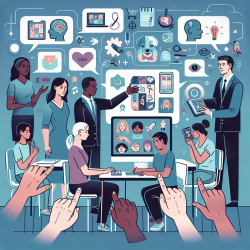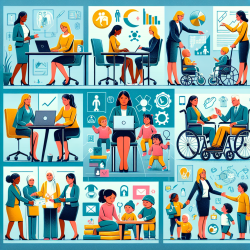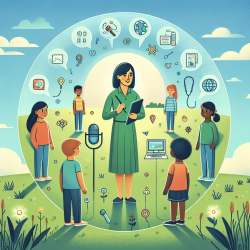Non-vocal communication systems have emerged as vital tools in bridging the communication gap for individuals unable to use verbal speech. These systems, which can be augmentative (enhancing existing speech) or alternative (replacing speech), offer a lifeline for effective communication. Drawing on insights from professionals in the field, this blog explores the positive aspects of non-vocal communication systems, their implications for users and their communities, and offers strategies for practitioners looking to implement these systems.
Positive Aspects of Non-Vocal Communication
- Enhances self-expression and autonomy, allowing individuals to communicate their needs, desires, and thoughts.
- Reduces frustration and behavioral issues stemming from communication barriers.
- Facilitates social interaction and integration, promoting inclusion in educational settings and the wider community.
- Supports cognitive development and language skills through the use of symbols, gestures, or electronic devices.
Implications for Families, Peers, and Communities
- Requires commitment and learning from families and educators to effectively interact using the non-vocal system.
- Demands resources for training, equipment, and ongoing support, potentially straining budgets.
- Encourages a collaborative approach in educational and social settings, fostering a more inclusive environment.
- May alter perceptions of communication and disability, promoting greater awareness and acceptance.
Strategies for Practitioners
- Assessment and Customization: Evaluate the individual's needs, abilities, and preferences to select the most appropriate non-vocal system. Tailor the system to the user's life, incorporating personal interests and relevant vocabulary.
- Training and Support: Provide comprehensive training for the user, their family, and educators. Ongoing support is crucial for adapting the system as the user's needs evolve.
- Collaboration: Foster a team approach, involving speech-language pathologists, occupational therapists, educators, and families in the implementation and integration of the communication system.
- Advocacy: Advocate for the user's right to communicate, ensuring access to necessary resources and accommodations in educational and community settings.
The introduction and maintenance of non-vocal communication systems are not without challenges. These include the time and financial investment required to select, acquire, and customize technology, as well as the need for extensive training for all involved. However, the benefits — increased autonomy, improved behavior, and enhanced social inclusion for non-verbal individuals — are profound.
For practitioners, embracing these systems means adopting a multi-dimensional role that goes beyond traditional speech therapy. It involves becoming facilitators, educators, and advocates for non-vocal communication, ensuring that every individual has the opportunity to express themselves and engage with the world around them.
Embracing non-vocal communication systems opens up new avenues for interaction and education, transforming the lives of non-verbal individuals and enriching their communities. By understanding the positive aspects, implications, and effective strategies for implementation, practitioners can make a significant impact in the field of special education and beyond.
To read the original research paper, please follow this link: Considerations for the Implications of Non-Vocal Communication Systems.










